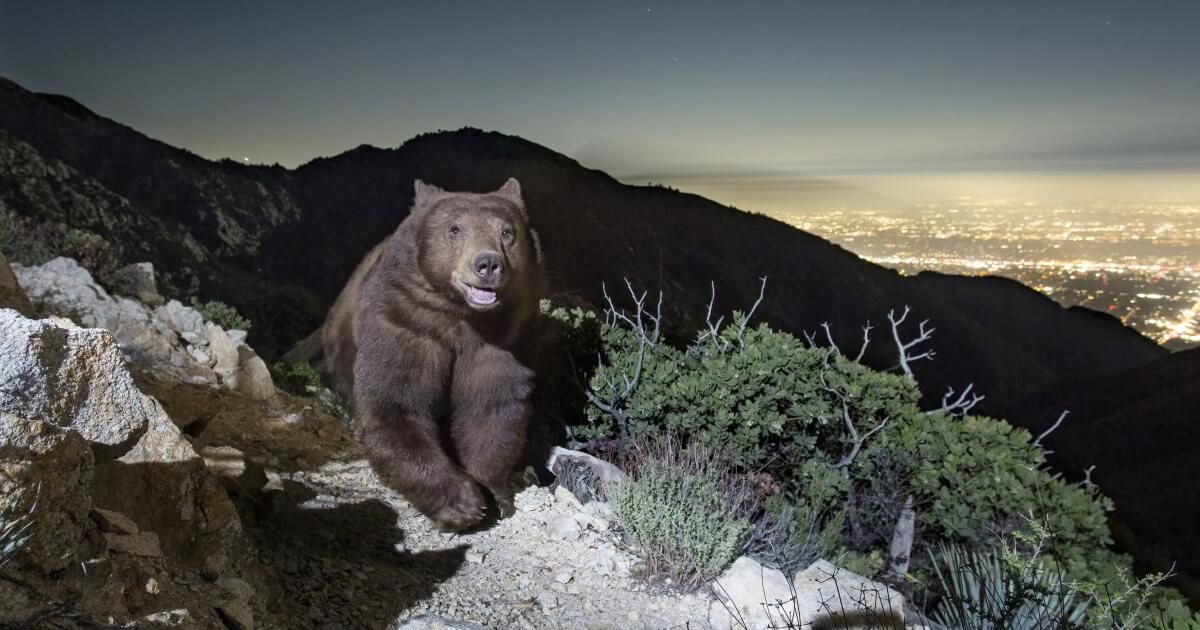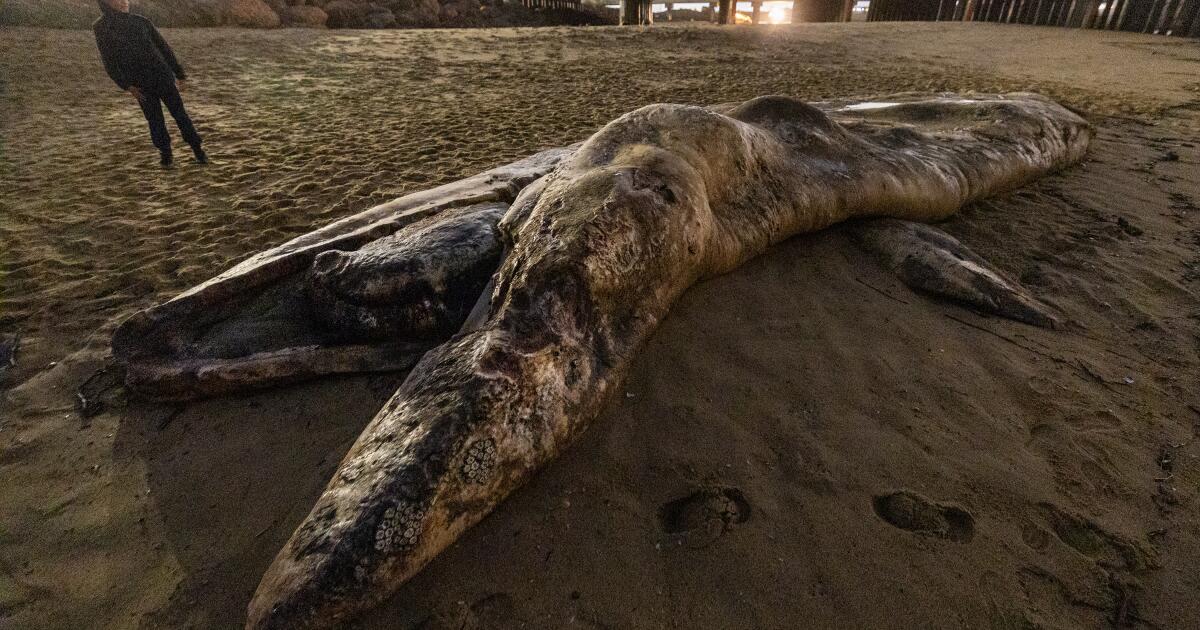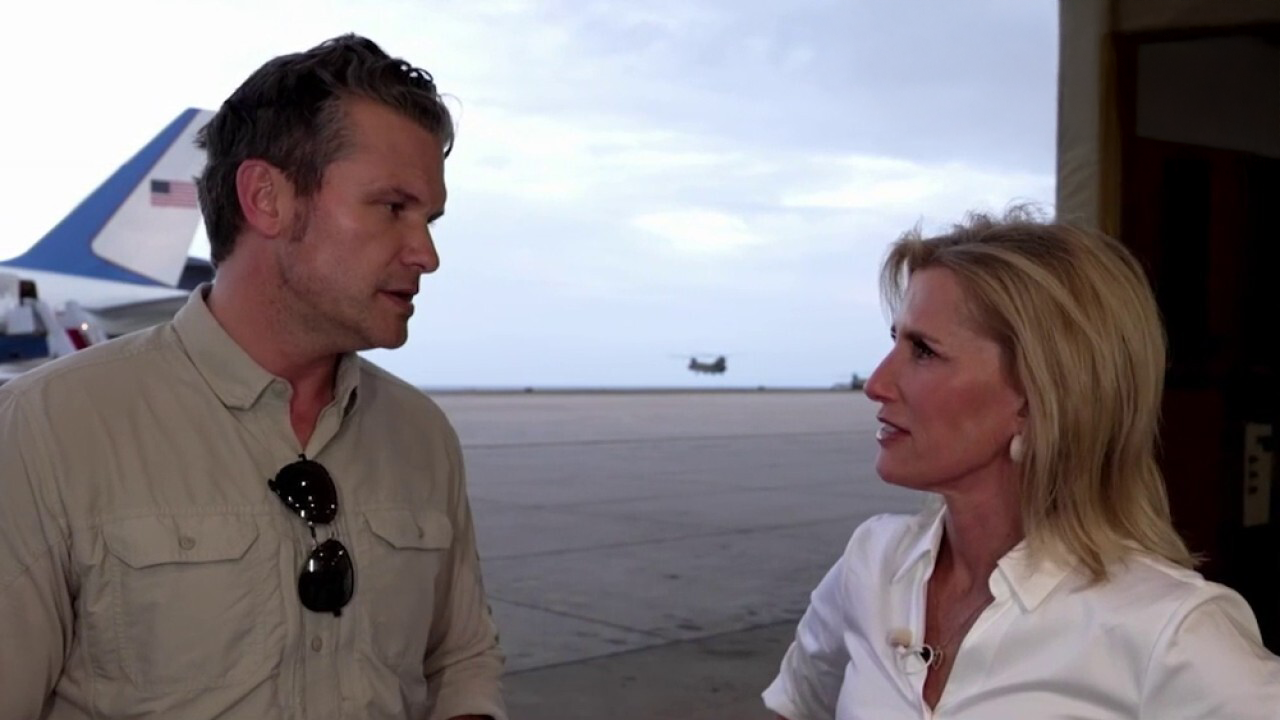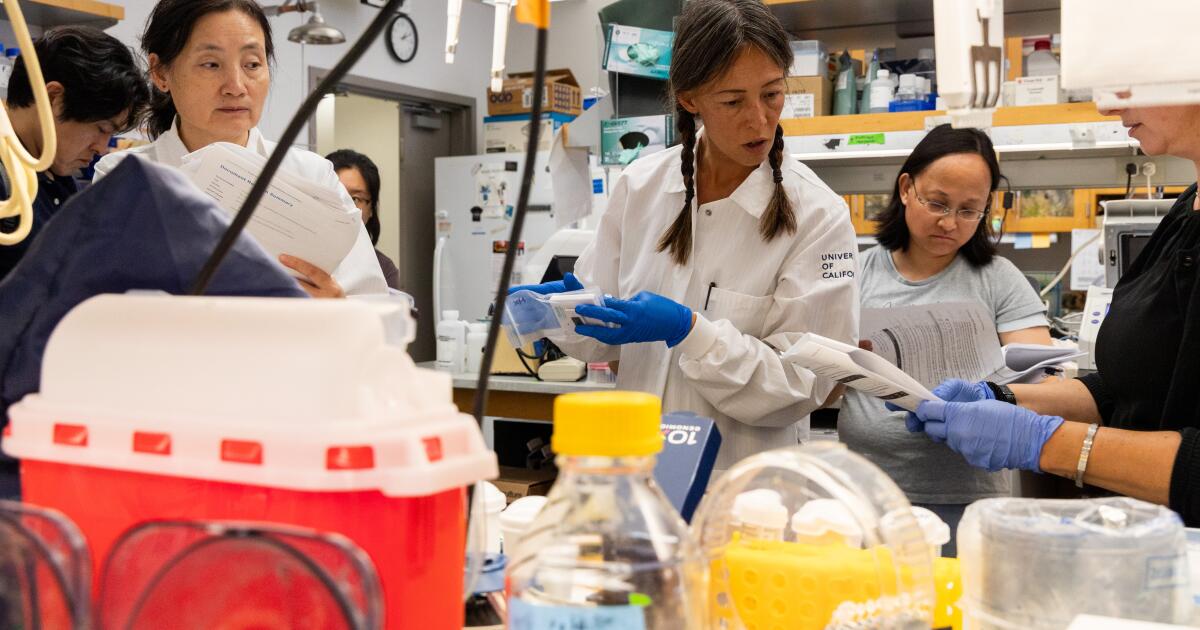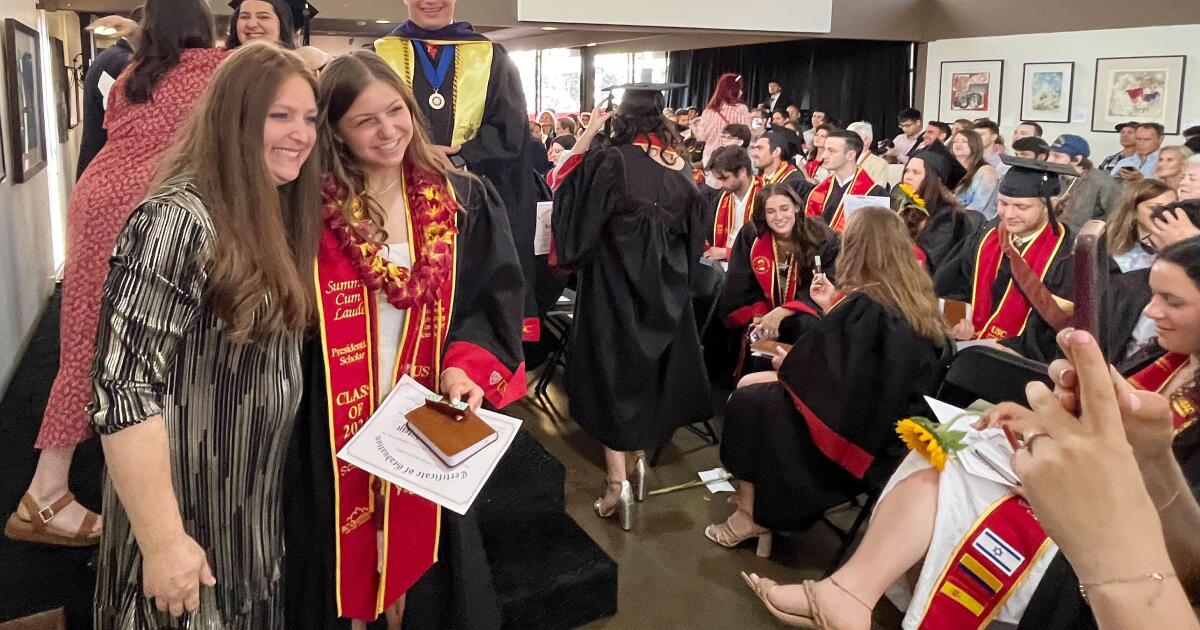In a city where paparazzi snaps of elusive celebrities attract the attention of millions of admirers, an image of a seemingly smiling Los Angeles heavyweight taking in the twinkling lights of Pasadena is about to go viral.
Under the stars in the mountains overlooking the San Gabriel Valley, wildlife photographer Johanna Turner captured an indelible image of a real-life bear appearing to pose for a photo.
The photo, taken with a trail camera in late April, could only have been captured remotely, Turner wrote on Facebook: “There's no way anyone could get that close in person.”
The bear appears to be climbing onto a plateau in the San Gabriel Mountains, with a smile on his face, with the lights of Hollywood and Los Angeles shining below.
She wrote that she named the file “BrownHappyBear” because of the apparent smile on the black bear's face.
The photo was taken “within the portion of the Angeles National Forest that the Biden administration recently added to San Gabriel National Monument status,” Turner wrote in correspondence with The Times.
“So this bear now has additional funding to protect its habitat, which is fantastic,” he wrote, “for an area with a lot of human recreational use.”
Turner shared tips from the California Department of Fish and Wildlife on how to interact with bears in the wild.
“Dogs can startle or frighten bears and cause defensive behavior,” according to the state agency's website, so dogs should be kept on a leash on trails.
As Southern California's climate warms, bears often venture into developed areas in search of food and water. Black bears, like the one pictured, tend to be less dangerous to humans than the grizzly bear depicted on the state flag.
If they encounter a black bear in the wild, hikers should back away slowly and avoid eye contact while appearing larger and making noise, according to the California Department of Fish and Wildlife.
However, in general it is humans who have encroached on black bear habitat and put them in danger.
“As our human population expands into wildlife habitat, human-wildlife interactions have increased,” the state agency writes. “Some people don't realize the harm of feeding wild animals or preventing access to attractants.”

